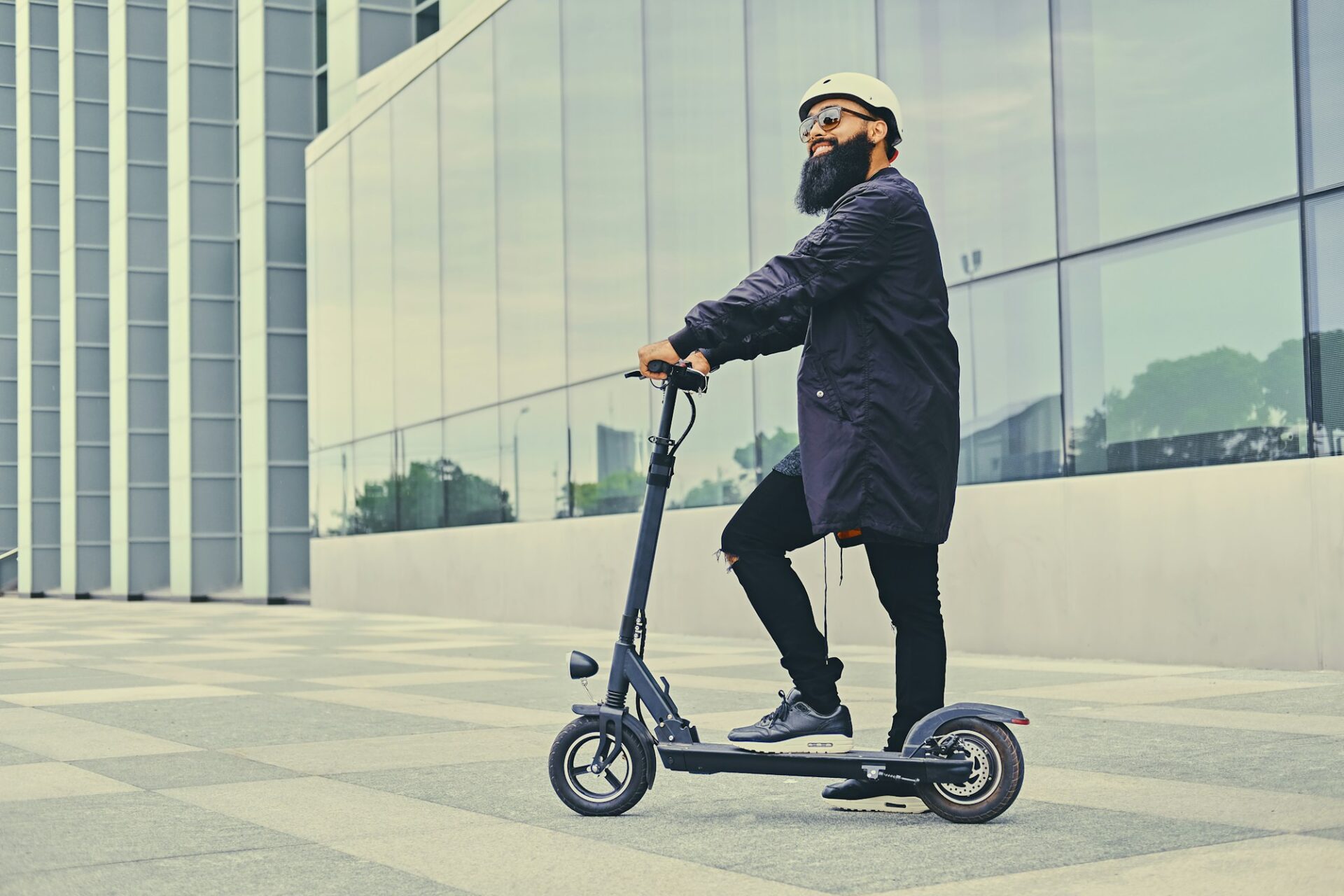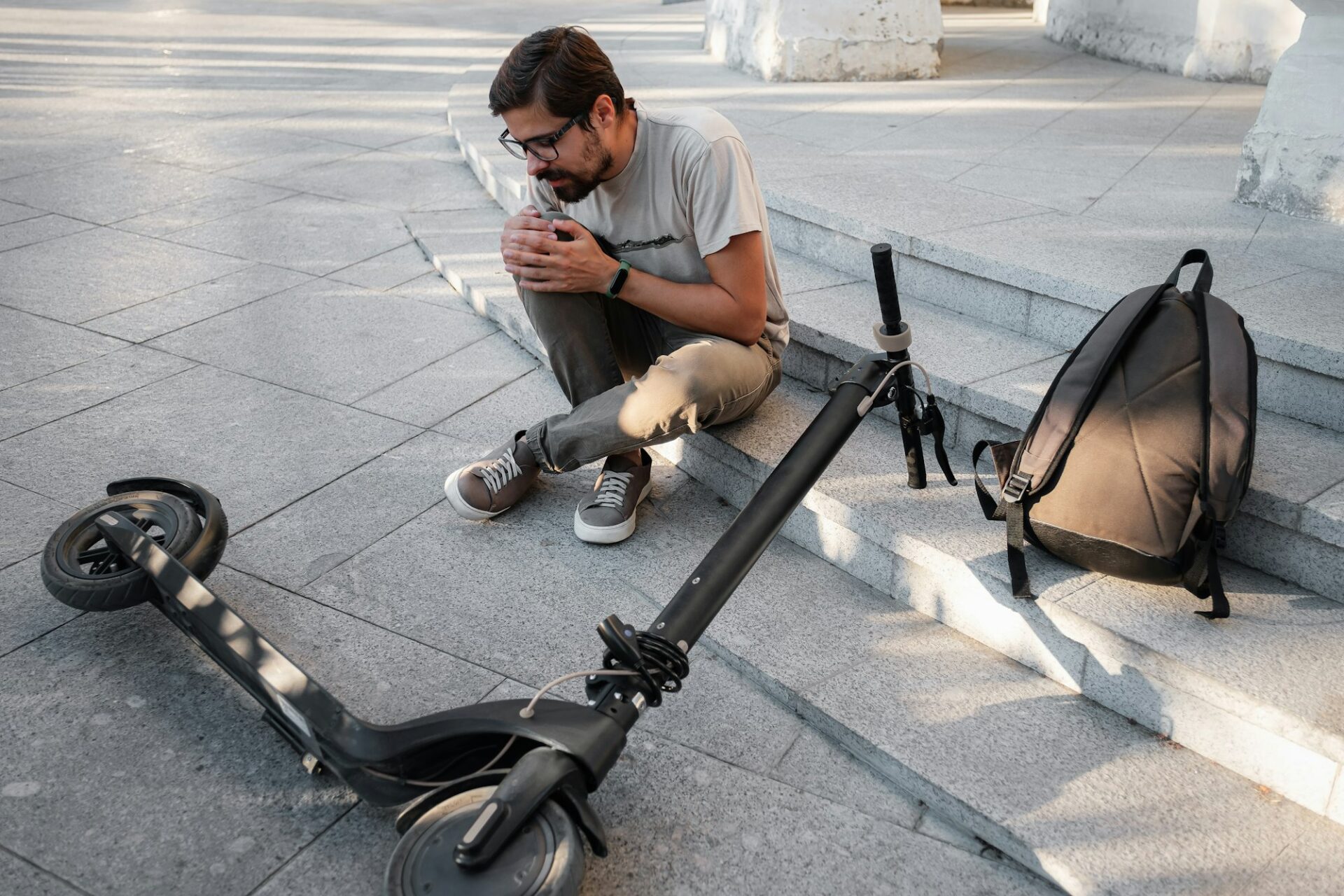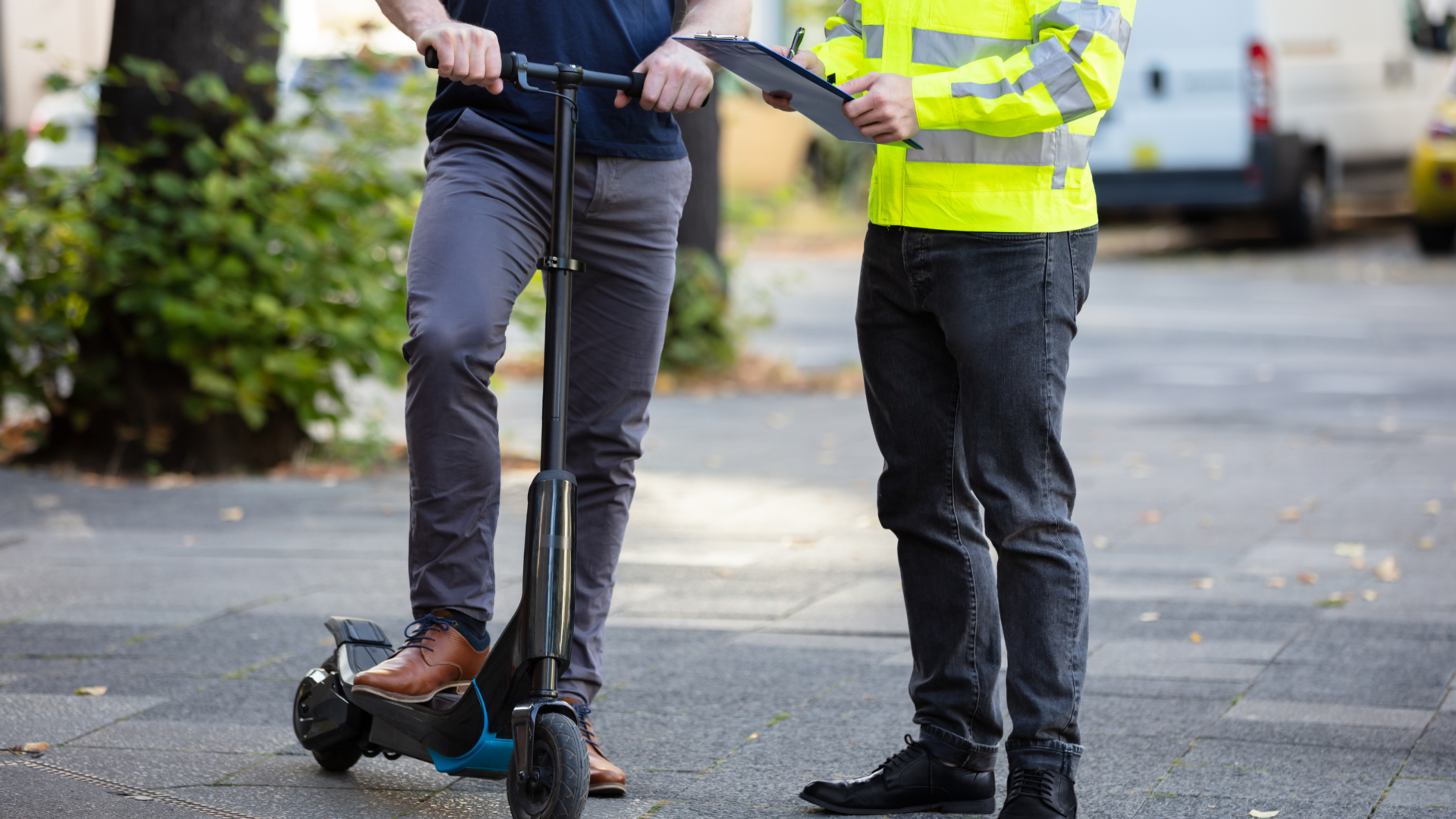Are Electric Scooters Dangerous? Essential Safety Tips and Statistics to Know
Electric scooters have revolutionized urban transportation, offering a fun, eco-friendly alternative to cars and public transit. However, along with their convenience and fun come questions about their safety. Are electric scooters dangerous? If you’re considering hopping on one, it’s essential to be informed about the potential risks and how to mitigate them.
In this article, we delve into the common e-scooter injuries and accidents associated with electric scooters, share crucial safety tips, and present the latest statistics on electric scooter accidents. We’ll also compare e-scooter riders’ safety with other modes of transportation and review the relevant regulations and laws. By the end, you’ll have a comprehensive understanding of the safety concerns surrounding electric scooters and how to enjoy them responsibly.
- Understanding Common Accidents and Injuries Associated with Electric Scooters
- Essential Safety Tips for Riding Electric Scooters
- Statistics on Electric Scooter Accidents
- Comparing the Safety of Electric Scooters and Other Modes of Transportation
- Regulations and Laws Related to Electric Scooters
- Conclusion: Balancing the Fun and Risks of Electric Scooters
So let’s dive in and explore the true risks and rewards of this modern mode of transportation.

Understanding Common Accidents and Injuries Associated with Electric Scooters
Electric scooters have surged in popularity, but their increased use has also led to a rise in accidents and associated injuries. It’s crucial to understand the typical scenarios where these mishaps occur and the types of injuries riders might sustain.
Common Electric Scooter Accidents
- Collisions with Vehicles: A significant number of electric scooter accidents involve collisions with cars or bicycles. This often happens at intersections or when e-scooter riders are not clearly visible to drivers.
- Falls and Loss of Control: Riders frequently lose control of their scooters, either due to sudden stops, uneven road surfaces, or mechanical failures. This can lead to bruises, fractures, and head injuries.
- Pedestrian Involvement: In crowded urban areas, scooter accidents sometimes involve pedestrians, causing dual-party injuries.
- Night Riding Issues: Riding at night without proper lights and reflectors can increase the risk of injuries due to reduced visibility.
Common Injuries
- Head Injuries: Traumatic brain injuries are a major concern, particularly when riders do not wear helmets. Even a seemingly minor fall can result in significant head trauma.
- Fractures and Sprains: Wrists, arms, and legs are commonly fractured in scooter accidents. Ankles also frequently sustain sprains due to sudden twists or impacts.
- Abrasions and Lacerations: Falling off a scooter often leads to scrapes and cuts, which can sometimes be deep or require medical attention.
- Soft Tissue Injuries: Muscles, tendons, and ligaments can be strained or torn during accidents, leading to long recovery periods.
Understanding these common accidents and injuries can guide us to the next important topic: how to minimize these risks. Ensuring we have the appropriate safety gear, knowing the speed limits, and understanding rider behavior is crucial for e-scooter accident prevention.

Essential Safety Tips for Riding Electric Scooters
While electric scooters offer a convenient and green mode of transportation, safety should always be a priority. Adhering to the following electric scooter safety tips can significantly reduce your injury risks and injuries.
Wear Appropriate Safety Gear
- Helmet: Always wear a helmet to protect your head in case of a fall or collision. A helmet can reduce the risk of traumatic brain injuries.
- Protective Pads: Consider wearing knee and elbow pads to cushion falls and prevent fractures or abrasions.
- Reflective Gear: Wear bright or reflective clothing, especially if riding at night, to increase your visibility to others.
Follow Traffic Rules and Regulations
- Adhere to Speed Limits: Many major cities have set speed limits for electric scooters. Riding within these limits can prevent loss of control and accidents.
- Observe Traffic Signals: Just like other vehicles, electric scooters must obey traffic lights and signs. This helps prevent collisions with cars and pedestrians.
- Know Local Laws: Familiarize yourself with electric scooter regulations in your area, including designated riding zones and parking regulations.
Maintain Your Scooter
- Regular Inspections: Check the scooter’s brakes, tires, and motors before each ride. Functional brakes and properly inflated tires are crucial for safety.
- Battery Care: Ensure the battery is fully charged and in good condition. A suddenly depleted battery can lead to unexpected stops.
- Professional Servicing: Periodically take your scooter for professional maintenance to ensure all components are in optimal working condition.
Adopt Safe Riding Practices
- Avoid Distractions: Refrain from using your phone or listening to loud music while riding. Full attention is necessary to navigate safely.
- Use Both Hands: Always keep both hands on the handlebars to maintain control and stability, especially on uneven surfaces.
- Watch for Road Hazards: Be alert for potholes, debris, and other obstacles. Slow down and navigate around them carefully.
By following these electric scooter safety tips, you can ensure a safer riding experience for yourself and others. The next section delves into the statistics on electric scooter accidents, helping us understand the scope and scale of the issue.

Statistics on Electric Scooter Accidents
Understanding the scale and scope of electric scooter accidents can help us gauge their safety and identify areas for improvement. Analyzing electric scooter injury statistics reveals valuable insights into common causes and impact points.
National Data on Electric Scooter Accidents
- Injury Rates: According to a report from the Centers for Disease Control and Prevention (CDC), electric scooters resulted in approximately 20 injuries per 100,000 trips. Such incidents often result in emergency room visits and hospital stays.
- Fatalities: The National Highway Traffic Safety Administration (NHTSA) reported an increase in fatalities associated with electric scooter use. Several cities have recorded multiple deaths attributed to scooter accidents over the past few years.
- Age Distribution: Most electric scooter accidents involve young adults aged 18-34. This demographic is often more likely to adopt new transportation technologies.
Common Causes of Accidents
- Speeding: With some electric scooters capable of speeds up to 20 miles per hour, excessive speed is a leading cause of accidents, often resulting in severe injuries.
- Alcohol Influence: Riding under the influence of alcohol or drugs significantly increases the risk of accidents, mirroring trends seen with other vehicles.
- Infrastructure Issues: Poor road conditions, lack of bike lanes, and incompatible urban infrastructure contribute to accident rates.
Hospital Data and Injury Types
- Head Injuries: Research indicates that head injuries represent about one-third of all recorded scooter-related injuries, underscoring the importance of helmet use.
- Limb Fractures: Fractures to the wrists, arms, and legs are commonly reported, often requiring significant medical treatment and recovery time.
- Soft Tissue Damage: Abrasions, lacerations, and bruising are prevalent, particularly in falls and collisions involving rough surfaces.
While the statistics may paint a grim picture, they also highlight the critical areas where safety measures can make a difference. As we move forward, it’s essential to compare the safety of electric scooters with other modes of transportation to better understand their relative risks and benefits.

Comparing the Safety of Electric Scooters and Other Modes of Transportation
When considering whether electric scooters are dangerous, it’s helpful to compare their safety to other common modes of transportation. This section investigates how electric scooters stack up against bicycles, cars, and public transit.
Electric Scooters vs. Bicycles
- Injury Rates: Studies indicate that the injury rates for electric scooters are similar to those for bicycles, particularly in urban settings. Both modes often share the same infrastructure and face similar risks from vehicles and road conditions.
- Speed Limits: Electric scooters generally have lower speed limits compared to bicycles, which might reduce the severity of injuries in some cases. However, scooters are also less stable on uneven surfaces, which can lead to falls.
- Helmet Usage: Helmet usage is less common among electric scooter riders than cyclists, contributing to higher rates of head injuries among scooter users. Promoting helmet use could bridge this safety gap.
Electric Scooters vs. Cars
- Accident Severity: Accidents involving electric scooters tend to result in less severe injuries compared to car accidents. However, scooter riders are more vulnerable to collisions with vehicles due to the lack of external protection.
- Environmental Impact: Electric scooters contribute less to air pollution and traffic congestion compared to cars, making them an environmentally friendly alternative for short trips.
- Accessibility: Scooters offer greater flexibility and can navigate through traffic more easily, but this also exposes riders to risks from sudden car movements and limited rider visibility.
Electric Scooters vs. Public Transit
- Incident Frequency: Public transit is statistically safer than electric scooters. Buses and trains have fewer accidents per mile traveled, largely due to controlled environments and professional drivers.
- Convenience: While scooters provide last-mile convenience, the risks can be higher due to the lack of dedicated infrastructure and exposure to varying road conditions.
- Cost and Maintenance: Using public transit eliminates personal maintenance and operational costs. Electric scooters require individual care and attention to ensure safety, such as regular maintenance checks and battery care.
Understanding these comparisons helps contextualize the risks associated with electric scooters. The next section will elaborate on the specific regulations and laws governing electric scooters to further guide safe usage.

Regulations and Laws Related to Electric Scooters
Understanding the regulations and laws governing electric scooters is crucial for safe and lawful riding. These rules vary significantly by location, impacting how and where scooters can be used.
General Regulations
- Speed Limits: Many cities and states impose speed limits on electric scooters, usually ranging between 15 to 20 mph. Adhering to these limits is vital for both legal compliance and safety.
- Helmet Requirements: Helmet laws also vary. Some regions mandate helmet use for all riders, while others require helmets only for minors. It’s advisable to wear one regardless of legal requirements for enhanced safety.
- Riding Areas: Regulations often restrict where electric scooters can be ridden. In many places, scooters are allowed on bike lanes but prohibited on sidewalks to protect pedestrians.
State-Specific Laws
- California: California’s laws are stringent. Riders must be at least 16 years old, wear a helmet, and are prohibited from riding on sidewalks. Scooters must also be equipped with lights for night riding.
- Texas: Texas allows electric scooters in bike lanes and on roads where the speed limit is 35 mph or lower. Helmet use is recommended but not mandatory for adults.
- New York: New York recently legalized electric scooters in certain areas with a maximum speed limit of 15 mph. Helmet use is required for riders under 18.
Local Variations
- City Ordinances: Besides state laws, city ordinances might impose additional restrictions. Some cities have banned electric scooters outright, while others have implemented geofencing to control where scooters can be parked and ridden.
- Geofencing: Many cities use geofencing technology to create no-ride and no-parking zones. These digital boundaries help manage scooter use in high-traffic or pedestrian-heavy areas.
- Parking Regulations: Incorrectly parked scooters can obstruct sidewalks and create hazards. Many cities have specific rules about where scooters can be docked, often requiring them to be parked in designated areas.
Compliance and Enforcement
- Fines and Penalties: Non-compliance with local laws can result in fines or other penalties. Riders should be aware of these to avoid legal issues.
- Insurance Requirements: While not universally required, having insurance for your electric scooter can offer financial protection in case of accidents or injuries.
- Enforcement: Law enforcement agencies are increasingly attentive to scooter regulations. Riders caught breaking the rules may face citations or confiscation of their scooters.
Staying informed about the regulations and laws related to electric scooters is essential for riding responsibly and avoiding legal troubles. Informed riders contribute to safer streets and a more harmonious coexistence with other modes of transport. The final section will sum up the key points discussed and offer a balanced view of the fun and risks of electric scooters.

Conclusion: Balancing the Fun and Risks of Electric Scooters
Electric scooters have become an integral part of urban transportation, offering an appealing alternative to traditional transit methods. However, as with any mode of transportation, they come with their own set of risks and safety concerns. Are electric scooters dangerous? The answer depends on how they are used and the precautions taken to mitigate risks.
Key Takeaways
- Accidents and Injuries: Common accidents involving electric scooters often result in head injuries, fractures, and soft tissue damage. Proper use of helmets and protective gear can significantly reduce injury severity.
- Safety Tips: Adhering to electric scooter safety tips, such as following speed limits, conducting regular maintenance, and wearing reflective clothing for night riding, can help prevent accidents.
- Accident Statistics: Electric scooter injury statistics highlight the need for improved infrastructure and better safety awareness. Comparing these statistics with other transportation modes provides context for making informed choices.
- Regulations and Laws: Compliance with local regulations and laws is crucial for legal and safe riding. Understanding the specific rules in your area, including helmet requirements and speed limits, can help avoid penalties and enhance safety.
Balancing Fun and Responsibility
While the potential dangers of electric scooters should not be underestimated, responsible riding can mitigate many of these risks. Approaching electric scooter use with a combination of enjoyment and vigilance allows riders to benefit from this modern mode of transportation while minimizing hazards.
Final Thoughts
Electric scooters offer convenience, affordability, and a low environmental footprint, making them a popular choice for short-distance travel. By understanding the associated risks and following best practices for safety, riders can enjoy the benefits of electric scooters with greater peace of mind.
In conclusion, are electric scooters dangerous? They can be, but with the right precautions and responsible behavior, the risks can be managed effectively. Equip yourself with the necessary knowledge, adhere to safety guidelines, and always prioritize your well-being and that of others on the road.